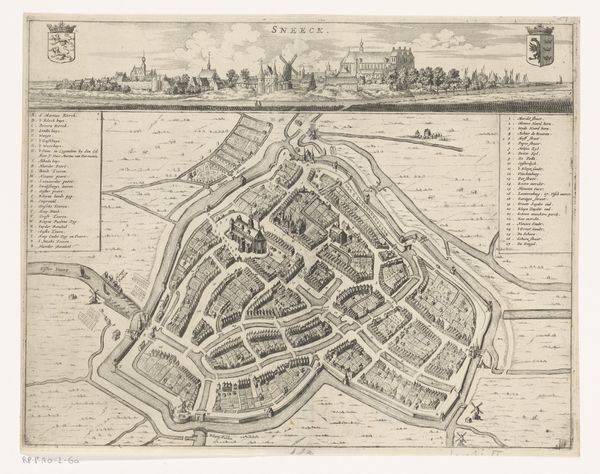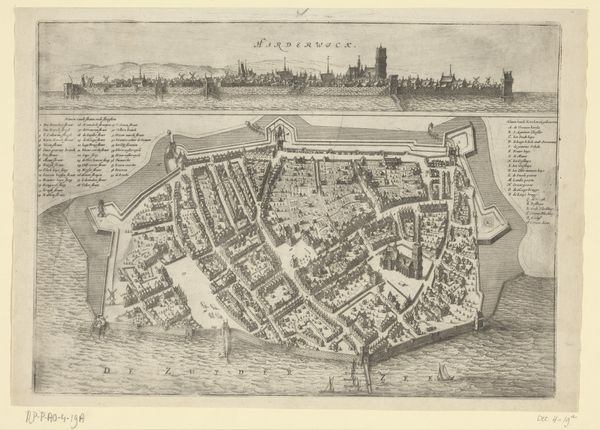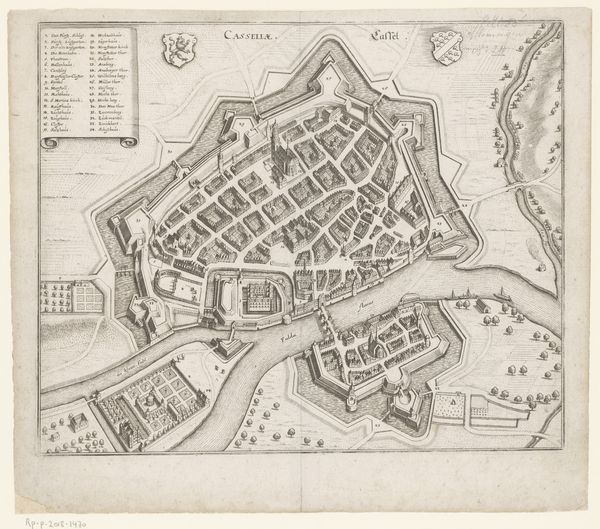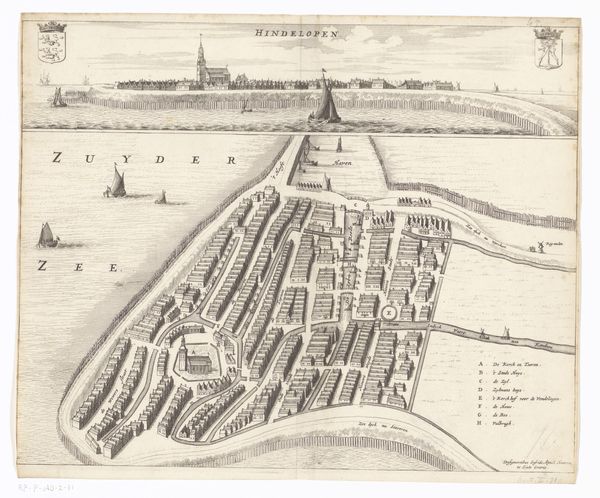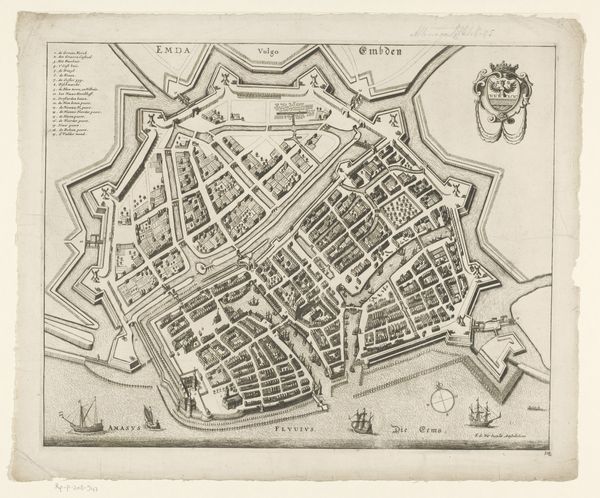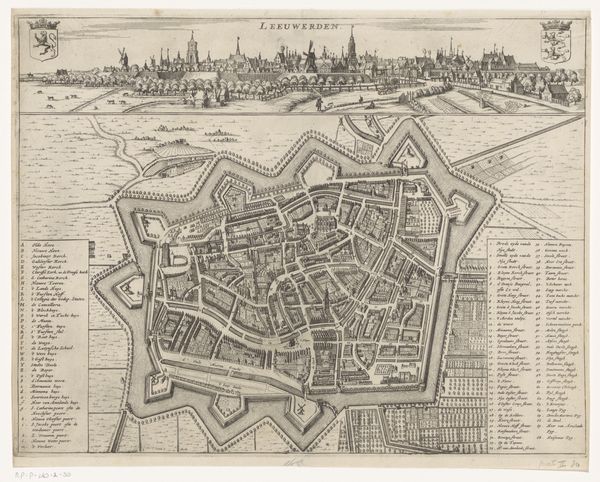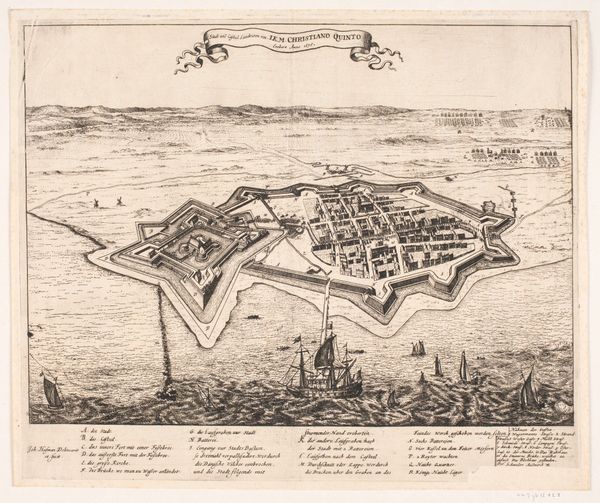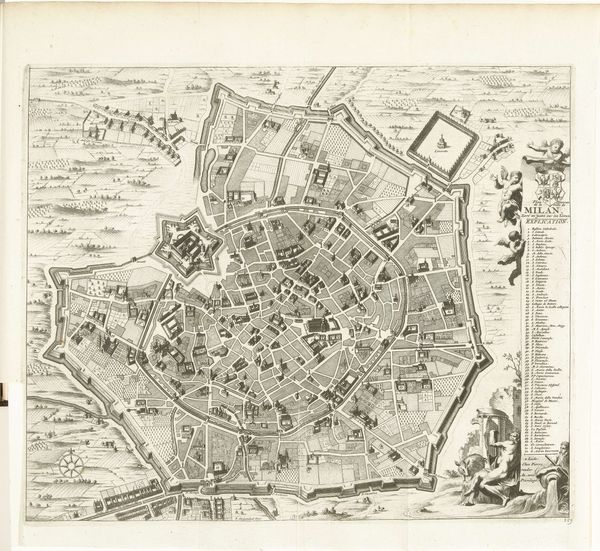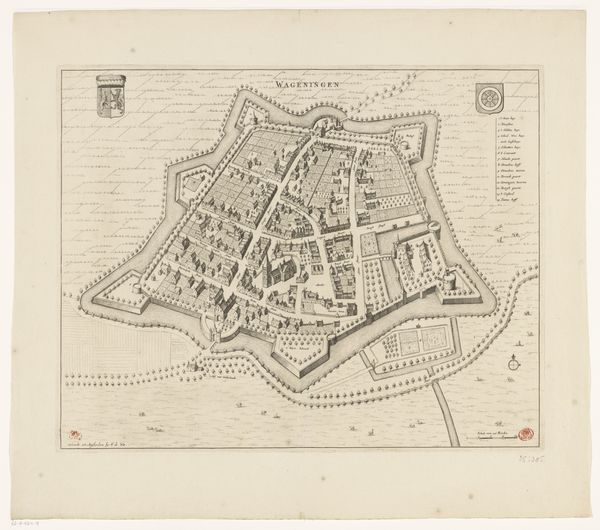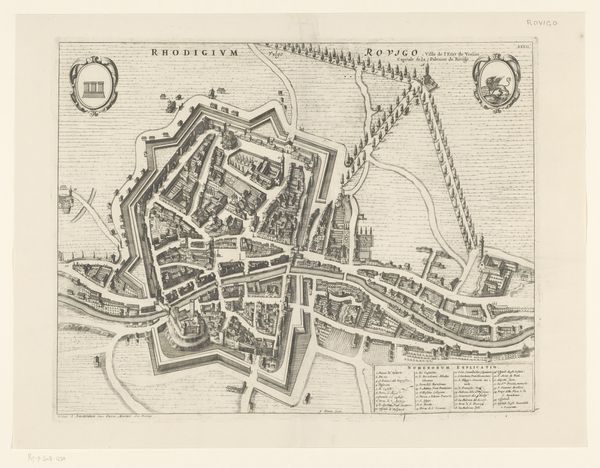
drawing, print, etching, ink, engraving, architecture
#
architectural sketch
#
drawing
#
aged paper
#
medieval
#
dutch-golden-age
#
mechanical pen drawing
# print
#
etching
#
old engraving style
#
sketch book
#
landscape
#
personal sketchbook
#
ink
#
sketchwork
#
pen work
#
architecture drawing
#
cityscape
#
storyboard and sketchbook work
#
engraving
#
architecture
Dimensions: height 283 mm, width 370 mm
Copyright: Rijks Museum: Open Domain
Curator: Here we have "Plattegrond van Sloten met stadsgezicht," a 1664 etching by Jacob van Meurs, part of the Rijksmuseum's collection. It presents a bird's-eye view of the city of Sloten. Editor: It’s quite striking, isn’t it? The precision is incredible, and the monochrome palette gives it a stark, almost haunting feel. It's a planned space, a fortified grid nestled within the embrace of the waterways. It speaks to power, control, and vulnerability, all at once. Curator: Exactly. This engraving is a fantastic example of the detailed cityscapes that were popular during the Dutch Golden Age. They served a practical function, of course, helping with urban planning and defense, but they also promoted civic pride. This wasn't just a map; it was a portrait of a city's identity. Editor: Absolutely, but it's vital to ask who is this "portrait" for? These hyper-organized urban centers, represented so neatly, hide the complexities of everyday life. We aren't seeing the struggles, the inequalities. It's an idealized vision created and consumed by the ruling class. Curator: True, such works frequently served the interests of those in power. Nonetheless, the level of detail is captivating. You can almost trace the city's history in its architecture, from the central church to the carefully positioned windmills and fortifications. Editor: And those fortifications tell their own story. This image is a reminder that cities are never neutral spaces. They're strategic assets, points of contention, reflecting the constant negotiation of power dynamics. This supposed "order" exists alongside real, lived experience that is no doubt more complicated and nuanced. Curator: Looking closer, I appreciate the way the artist used line and shading to give the buildings dimension. The aged paper itself adds another layer of historical weight. Editor: For me, it's the absences that speak the loudest. What stories aren’t being told in this pristine representation? Considering that lets us recognize the complexities of history itself. It's not only about what's presented but also about the silences woven in between. Curator: A valuable insight, reminding us to engage with such historical records critically, conscious of the context in which they emerged. Editor: It is through these interrogations that we learn more, allowing historical artworks to communicate not just the narrative intended, but perhaps, deeper social truths that may lie within.
Comments
No comments
Be the first to comment and join the conversation on the ultimate creative platform.
